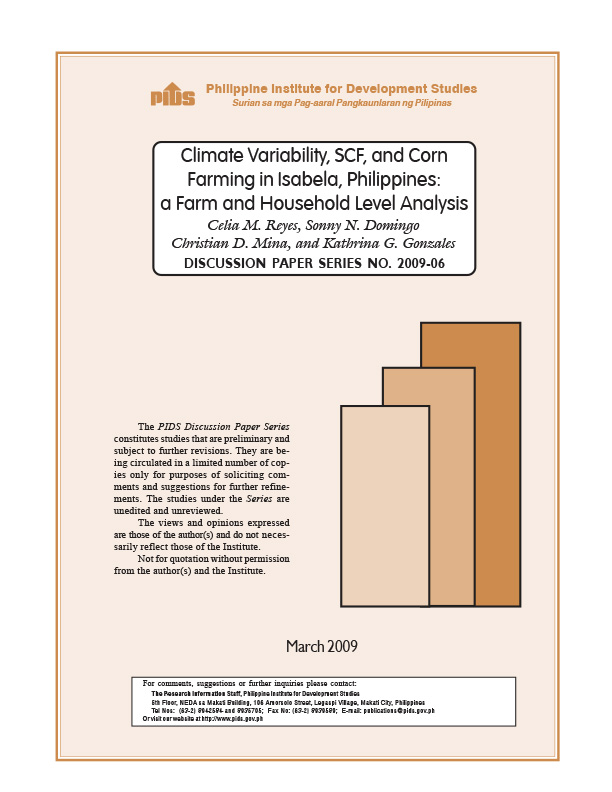Babylin Malacasta loaned half a million pesos to build her dream home when she heard that a bridge will be constructed to connect Barangay Dialaoyao to the Palanan town proper. Her trip to the Municipal Trial Court where she works would be easier. And the best part, she wouldn’t have to move away from the community she grew up in. All seemed well.
But that was back in 2008. Seven years later, Babylin chose to live with her cousin instead. The bridge is still unfinished and she has lost faith that it would one day be functional. Her P 500,000 went down the drain. What was constructed of her dream home now serves as parking space for her brother’s motorcycles.
Babylin is only one of the many residents in Isabela who are affected by defective bridges. Sadly, even though a huge chunk of the people’s taxes are spent on hard projects, the Philippines remains at the bottom rung of ASEAN countries in terms of quality of infrastructure.
According to the Philippine Institute for Development Studies (PIDS) and the 2013 Global Competitiveness Report, Philippine infrastructure ranked 98th out of 144 countries in the world, and ranked second to the last in ASEAN countries — besting only one nation, Vietnam.
The said report manifests itself in many defective roads, buildings, and bridges across the archipelago — and Filipinos are paying the price.
The construction of the Dibenbenan Bridge in Palanan, Isabela was initiated in 2007 by former Mayor Natividad Bernardo, mother of the municipality’s current mayor. It will link distant barangays to the town’s poblacion.
However, both ends of Dibenbenan bridge remain unfinished, rendering the whole project useless for eight years.
Residents have to be crafty if they want to cross to the other side — but most of the time, it’s at the expense of safety.
The Local Government of Palanan loaned a total of P47 million pesos from the Land Bank of the Philippines for the construction of Dibenbenan bridge and the Palanan River Control project in Brgy. Centro West. Both projects still have not seen completion though it was stated that they have to be done in a year.
The contracts for the bridge and the river control project were awarded to GEM Construction and Supply. The company was later renamed as Megashine Builders Corporation. Megashine has a Triple A classification in the Philippine Contractors Accreditation Board, but their office could not be located.
Like the Dibenbenan bridge, GEM Construction and Supply also abandoned the Palanan River Control project. According to the Commision on Audit, only 50 percent of the river control was finished since its construction in 2007.
The supposed five-minute trip to Palanan’s poblacion becomes a 30-minute struggle for residents — some of whom are already paying for the multi-million peso loan with their taxes without benefitting from it.
In Cabagan, Isabela, residents take extra measures of precaution when crossing the Cansan-Bagutari Overflow Bridge especially at night or when rain is falling. There are no streetlights to help drivers navigate in the dark, making the bridge prone to accidents. (Photo by Orlando Figueroa)
The bridge also slopes dangerously in the middle, causing drivers to lose control of their speed and balance. Often, they fall into the river. These accidents have irked the residents in Cabagan — especially because it has been five years but efforts to fix the problem were either bandaid measures, like installing temporary steel barriers that gather rust over time, or non-existent. (Photo by Orlando Figueroa)
In dismay, some residents opt to take a boat instead. (Photo by Orlando Figueroa)
Even the dead find it hard to reach their destination because of the Pigalo Bridge in Angadanan, Isabela. Many people have no choice but to cross it because it is the easiest way to reach the neighboring town of San Guillermo. In the name of saving time, residents risk their lives everyday just to get to the other side.
Typhoons have caused Pigalo bridge’s side to give way, making it impossible for vehicles to cross even if the river water is low. Only bicycles, motorcycles, and pedestrians can pass through it now. According to the residents, the bridge has been in this sorry state since 2011. (Photo by Orlando Figueroa)
Even though a huge portion of Pigalo bridge is submerged in water, repairing it is taking an awful lot of time. In 2012, Angadanan Mayor Lourdes Panganiban asked the Department of Public Works and Highways (DPWH) for P520 million to repair the 20-year-old bridge. It was endorsed by ASEC Maria Catalina Cabral.
After three years and a series of exchanges between the House of Representatives, DPWH, and the LGU, Pigalo bridge is still not fixed. The cost for repairing it was narrowed down to P454.4 million.
House bills have also been drafted to make Pigalo bridge a national road — which means the funds will come from the national government and will, therefore, make reconstruction easier. (Photo by Orlando Figueroa)
Meanwhile, taxpayers grit their teeth while bearing the consequences of building substandard infrastructure projects. (Photo by Orlando Figueroa)
What can you say about the state of the bridges in Isabela, Kapuso? Are there similar concerns in your province? Tell us in the comments! -
Related Posts
Publications
Press Releases
Video Highlights
[No related items]
Infographics
[No related items]



